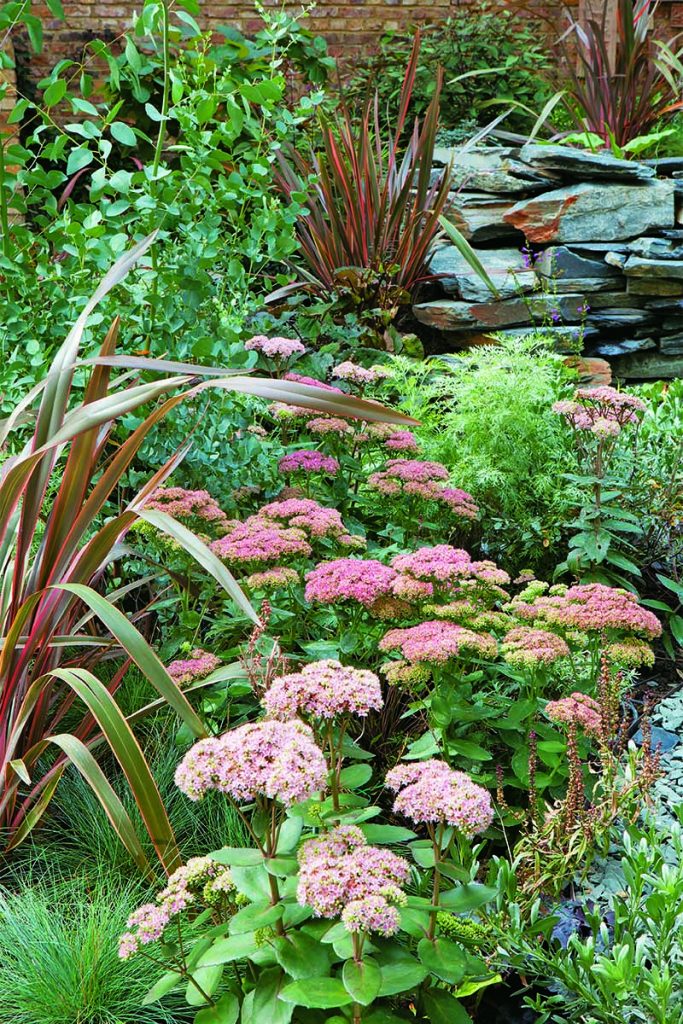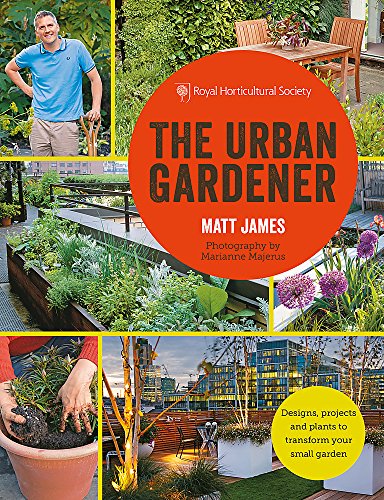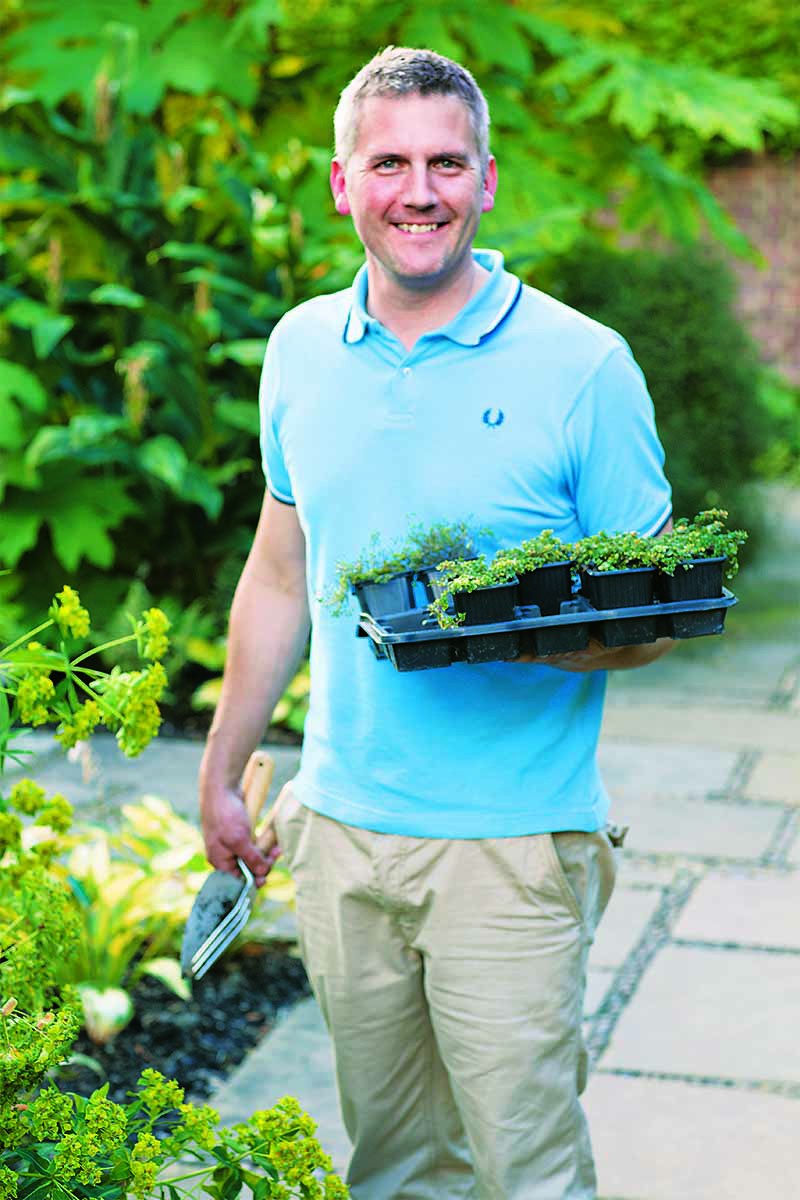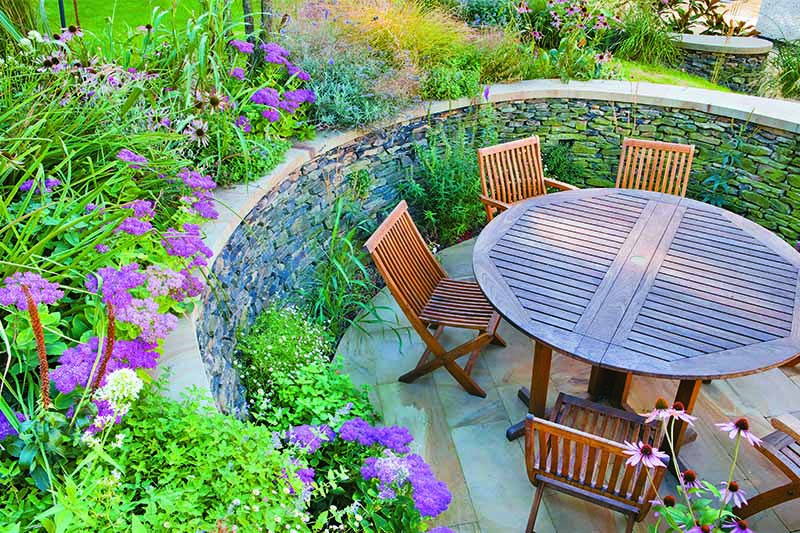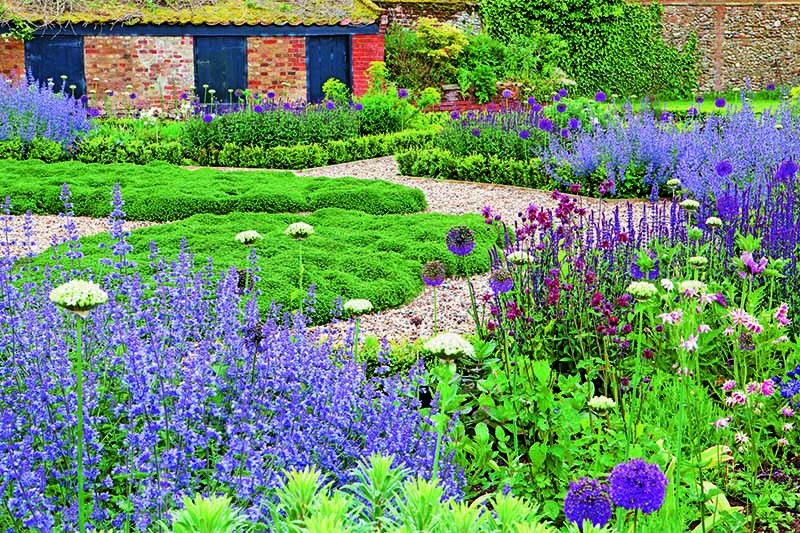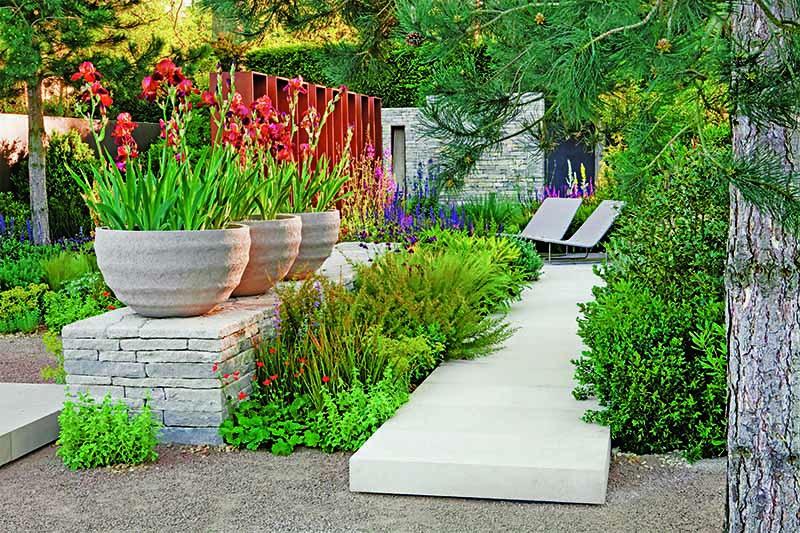Gardening is for everyone, and no one states that more clearly than Matt James, in his book The Urban Gardener.
About the Author
You may recognize award-winning designer and Cornwall native Matt James from several UK public television gardening series, including “The City Gardener,” “Love Your Garden,” and “Great British Garden Revival.” From sleek sophistication to cottage-style charm, this how-to guide is packed with photos and directions for making the most out of whatever outdoor space you have. With a “less is more” philosophy, the author advocates letting the setting guide your choices, minimizing maintenance, and conserving resources. He currently has a garden design business, Matt James Gardens, and is a project manager and instructor with The Eden Project, where his design degree students have earned prestigious awards. In 2016, they earned the opportunity to compete at the RHS Hampton Court Palace Flower Show. James is the author of five gardening books and articles in numerous publications including Garden Design Journal. The Urban Gardener was originally published as a hardback by Mitchell Beazley in 2014, and now comes to us in paperback, courtesy of the highly esteemed Royal Horticultural Society. Per the RHS in the introduction to the book, over 90 percent of UK residents live in urban settings, and gardening in the city is a great way to inhibit flooding and restore habitat. Let’s look inside!
In True British Style
Gardening in small spaces has a proud tradition in the UK. Per the National Allotment Society, plots called “allotments” date to the nineteenth century, and were allocated to the working poor for growing food to sustain their families. By World War II, many folks had “victory gardens” to supplement scarce produce. Community gardens have carried on the tradition, and James takes it into the twenty-first century with deftly crafted small-space gardens overflowing with fruit, herbs, and vegetables to feed the body, as well as lush mini-retreats to nourish the spirit.
First Impressions
Those of you who follow my review articles on Gardener’s Path know that once I nail down the author’s credibility, I jump right to the middle and prepare to be wowed. This book does that and more. With glorious photos by award-winning and world-renowned garden photographer Marianne Majerus, the pictures alone earn this book high marks. And they are perfectly interspersed among the written material, for a visually appealing reader experience rich in color, light, and drama. As an Anglophile, I eagerly pored over the vivid pages, looking for recognizable scenery. What I found instead is much better – a collection of design vignettes that are universal and applicable to temperate cities everywhere. However, the language reassured me that I was, indeed, in the awesome realm of the Royal Horticultural Society. From courgettes (zucchini) and aubergines (eggplant) to cloches (bell-shaped glass domes) and swards (expanses of short grass) I was charmed and ready to be inspired.
Cover to Cover
This paperback edition measures 7.5 x 0.8 x 9.8 inches, weighs 1.5 pounds, and has 224 pages. It’s got extra long covers that fold double for added stiffness and durability, and a glued spine. In the introduction, a photo of a grinning James and heartfelt words invite readers to create “green havens,” no matter how small. He reminds us of the positive impact gardens have on the environment, and on one another. This is followed by six main sections. Here are the highlights of each:
Gardening on the Ledge
In this first section, readers are encouraged to evaluate their settings, starting with attributes like exposure, existing plants, and soil conditions. But then, we are asked to consider the “borrowed” landscape that includes the backdrop of scenery seen from the place we intend to cultivate.
What Does the Urban Garden Look Like?
In this section, sustainability is defined, and tips for growing an environmentally “green garden” are offered. James goes on to discuss design strategies that unite an outdoor living space with the architectural elements that surround it and are a part of it. Eight of 13 case studies appear here, each with a summary text box titled “Why this Garden Works.” One such study is called “Fun for All the Family,” in which designer Stuart Craine creates a “functional play area made of visually sympathetic materials (p. 57).” James considers privacy for activities like dining and hot-tubbing, as well as lighting, edible plantings, and attracting wildlife.
Spaces and Places
Courtyards, front gardens, passageways, and steps are the main topics in this section, with emphasis on outdoor entertaining. The first of 16 how-to’s appears here, and demonstrates a practical way to position a focal point. Several helpful text boxes aptly called “Practical Matters” touch on topics to be considered when gardening in a city setting, and planting on exposed areas like balconies is addressed.
Planting the Urban Garden
The notion of “right plant, right place (p. 105)” is introduced, in which an assessment of site condition guides flora selection. There’s also a handy text box that clarifies plant terms. The author suggests structural plants for walls and trees for ceilings, and describes the layering of feature, accent, and ground-covering plants. Several additional how-to’s focus on topics like mixed borders, climbing vines, moving plants, and naturalizing bulbs. A useful table recommends the appropriate number of plants for a given space, followed by topics like lawns and lawn alternatives, green roofs, gravel gardens, and ponds.
Container Gardening
This section has something for everyone, as most have a spot for a pot or two. There’s a concise text box that describes the attributes of various container materials like glazed terra cotta and metal, as well as their maintenance. James discusses topics like plant selection and drainage, and provides a how-to on setting up “permanent” pots.
Managing the Urban Garden
The book concludes with a discussion of what to expect in terms of maintenance for various types of plants, and offers techniques for watering wisely. How-to’s include making compost, planting close to a wall, and growing beneath trees. Feeding and troubleshooting for insects and pests round out this comprehensive guide.
“The Good Life”
This is a fun book to browse and return to again and again. It’s a warm invitation to city dwellers and others with small spaces to enjoy “a healthy slice of the good life (p. 164).” The author’s guiding principle for doing so begins with his definition of sustainability as “… the attempt to create and maintain a garden while causing as little damage to the environment as possible (p. 29),” and where resources and maintenance are kept to a minimum. And if you enjoy gardening books, make sure you check out some of our other reviews:
Scaling it Down with Jessica Walliser’s Gardener’s Guide to Compact Plants Audubon Society Trees of North America Restoring Habitat with Charlotte Adelman and Bernard Schwartz’s Midwestern Native Shrubs and Trees Exploring Rodale’s Ultimate Encyclopedia of Organic Gardening
Photos courtesy of The Urban Gardener by Matt James, published by Mitchell Beazley, in association with the RHS, © Marianne Majerus. Reprinted with permission.
